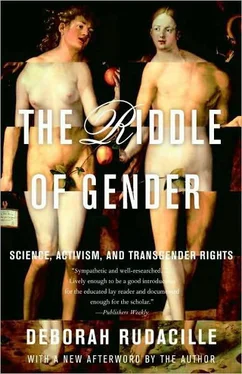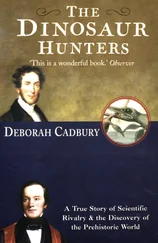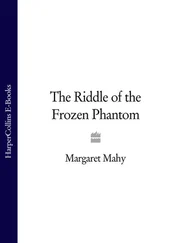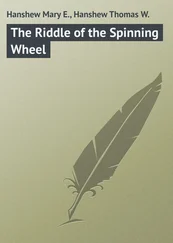The higher the dose, the greater is the expected effect Krimsky, Hormonal Chaos, 13.
The authors of a 2000 paper “It is also the case that the environmental endocrine hypothesis resides at the boundary of endocrinology and toxicology, challenging the common wisdom of both fields. For example, Crews et al. outlined some of the salient points that distinguish environmental endocrine disruption from other toxicological approaches. They contrast the ‘traditional toxicological approach,’ which utilizes a carcinogenic model or acute toxicity, with the ‘endocrine disrupter approach,’ which relies on a developmental model and delayed dysfunction.” McLachlan, “Environmental Signaling,” 320, referencing D. Crews, E. Willingham, and J. K. Sipper, “Endocrine Disrupters: Present Issues, Future Directions,” Quarterly Review of Biology jj (2000): 243—60.
In 1990 … Theo Colborn published the results of an extensive literature search T. Colborn, A. Davidson, S. N. Green, et al., Great Lakes, Great Legacyr (Washington, D.C.: Conservation Foundation, 1992).
studies on what he called “the positioning effect” F. vom Saal and F. Bron-son, “Sexual Characteristics of Adult Female Mice Are Correlated with Their Blood testosterone Levels during Prenatal Development,” Science 208 (1980): 597-99; F S. vom Saal, W. Grant, C. McMullen, and K. Laves, “High Fetal Estrogen Concentrations: Correlation with Enhanced Adult Sexual Preferences and Decreased Aggression in Male Mice,” Science 220 (1983): 1306-9.
Colborn, vomSaal, and other researchers begansharing data T. Colborn, F. S. vom Saal, and A. M. Soto, “Developmental Effects of Endocrine Disrupting Chemicals in Wildlife and Humans, Environmental Health Perspectives ioi (1993): 378-83.
Together, the two wrote a paper, published in the British medical journal The Lancet R. M. Sharpe and N. E. Skakkebaek, “Are Oestrogens Involved in Falling Sperm Counts and Disorders of the Male Reproductive Tract?” The Lancet 431 (1993): 1392—95.
Additional research funds to study different components Krimsky, Hormonal Chaos, 57.
Is it a coincidence that since the introduction of chlorinated pesticides Johnson, “Endocrine Disrupters.”
Clearly researchers knew that sexual developmental changes were observed with DDT…as early as igSo H. A. Burlington, V. F. Lindeman, “Effect of DDT on Testes and Secondary Sex Characteristics of White Leghorn Cockerels,” Proceedings of the Society for Experimental Biology and Medicine 74, no. 48051 (1950): 48-51. See also R. M. Welch, W. Leven, and A. H. Conney, “Estrogenic Action of DDT and Its Analogs,” Toxicology and Applied Pharmacology 14 (1969): 358—67.
When I saw the words “endocrine disrupter” a lightbulb went off in my head Author interview with Christine Johnson, Philadelphia, Pa., May 13,2002.
he acknowledged that 45 percent of his patients had hypogonadism Benjamin., Transsexual Phenomenon, 53, 75. Actually, Benjamin estimated that 40 percent of his patients showed signs of hypogonadism. In the chapter titled “The Etiology of Transsexualism,” he states: “A possible endocrine cause of transsexualism has been investigated in a few cases with great thoroughness. Beyond a few suspicious findings, no definite proof has yet been found. It may or may not have an endocrine significance that among my 152 male transsexuals, nearly 40 percent were found to have more or less distinct signs of a degree of sexual underdevelopment (hypogonadism). … In such a condition, the pituitary as well as the gonads may be at fault with, of course, an inborn reason behind it.” Benjamin’s shrewd guesses are not too far off the mark, judging from recent discoveries about the effects of EDCs.
Scott Kerlin recently uncovered a provocative lead Personal communication with the author, July 29, 2004. References H. Benjamin, “Should Surgery Be Performed on Transsexuals?” American Journal of Psychotherapy 25, no. 1 (January 1, 1971): 74-82. Also, H. Benjamin and C. L. Ihlenfeld, “Transsexualism,” American Journal of Nursing 73, no. 3 (March 1, 1973): 457-61.
They can recount exactly where they were and what they were doing See, for example, Morris, Conundrum, 15. “I was three or perhaps four years old when I realized that I had been born into the wrong body, and should really be a girl. I remember the moment well, and it is the earliest memory of my life. I was sitting beneath my mother’s piano, and her music was falling around me like cataracts, enclosing me as if in a cave…. What triggered so bizarre a thought I have long forgotten, but the conviction was unfaltering from the start.”
My former career was in the insurance industry NTAC listserv (ntacmem bers@yahoogroups.com) Tuesday, March 19, 2002.
Wonderful! For years I lived just 1A mile from a lot of those settling ponds Ibid.
These include fish, frogs, and alligators Author interview with Maverick. See also: D. M. Fry and C. K. Toone, “DDT-Induced Feminization of Gull Embryos, Science 213 (1981): 922-24; L. J. Guillette, T. S. Gross, G. R. Masson, et al., “Developmental Abnormalities of the Gonad and Abnormal Sex Hormone Concentrations in Juvenile Alligators from Contaminated and Control Lakes in Florida,” Environmental Health Perspectives 102 (1994): 680-88; T. Hayes, K. Haston, M. Tsui, A. Hoang, C. Haeffle, and A. Vonk, “Atrazine-Induced Hermaphroditism at 0.1 ppb in American Leopard Frogs (Rana pipiens): Laboratory and Field Evidence,” Environmental Health Perspectives in, no. 4 (April 2003): 568—75.
the concept is ahead of the science Author conversation with James Yager, Ph.D., Baltimore, Md., May 31, 2002.
estrogens are considered reversible cellular signals McLachlan, “Environmental Signaling,” 333.
when a gene programmed to respond to estradiol at puberty is misprogrammed Ibid., 335.
McLachlan points to one interesting example McLachlan, referencing J. R. Tanner, “St. Anthony’s Fire, Then and Now: A Case Report and Historical Review,” Canadian Journal of Surgery 30 (1987): 291—93.
individuals exhibiting the bizarre symptoms of St. Anthony’s fire J. McLachlan, “Environmental Signaling,” 335.
More people are coming around Author interview with Milton Diamond, Philadelphia Pa., March 21, 2003; Milton Diamond, “Pediatric Management of Ambiguous and Tramatized Genitalia.” Journal of Urology 162 (1999): 1021-28.
what is gender-specific behavior H. F. Meyer-Bahlburg, J. F. Feldman, P. Cohen, and A. A. Erhardt, “Perinatal Factors in the Development of Gender-Related Play Behavior: Sex Hormones versus Pregnancy Complications,” Psychiatry 51, no. 3 (1988): 260-71. See also Hestien Vreugdenhil, Froukje M. E. Slijper, Paul G. H. Mulder, and Nynke Weisglas-Kuperus, “Effects of Perinatal Exposure to PCBs and Dioxins on Play Behavior in Dutch Children at School Age,” Environmental Health Perspectives no, no. 10 (October 2002): 593-98; D. E. Sandberg, J. E. Venn, J. Weiner, G. P. Beehler, M. Swanson, and H. F. Meyer-Bahlburg, “Hormonally Active Agents in the Environment and Children’s Behavior: Assessing Effects on Children’s Gender Dimorphic Behavior Outcomes,” Epidemiology 14, no. 2 (March 2003): 148-55.
the subject of essential sex differences in the mind is clearly very delicate Baron-Cohen, Essential Difference, 1.
Systematizing and empathising are wholly … different processes Ibid., 3.
Читать дальше












